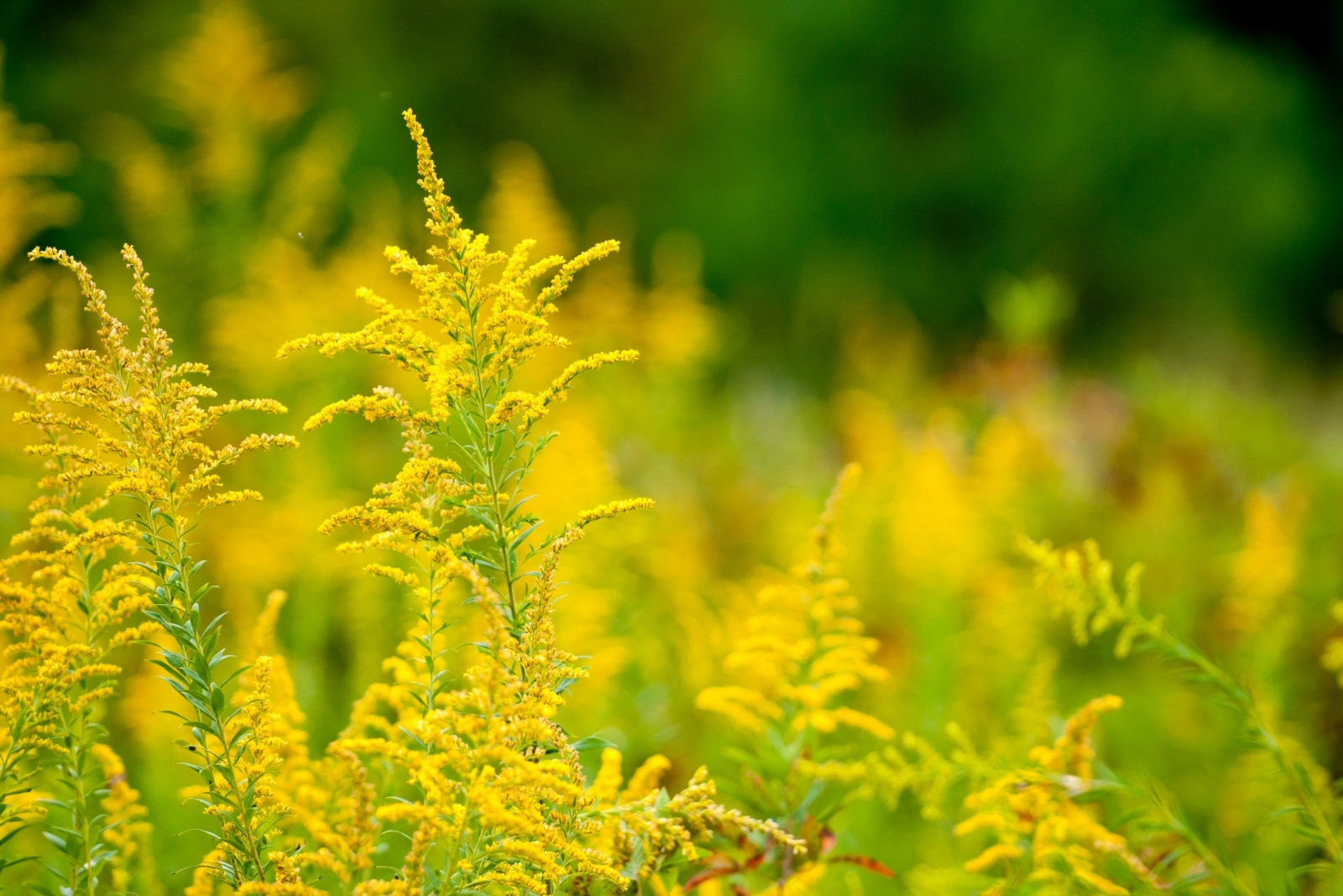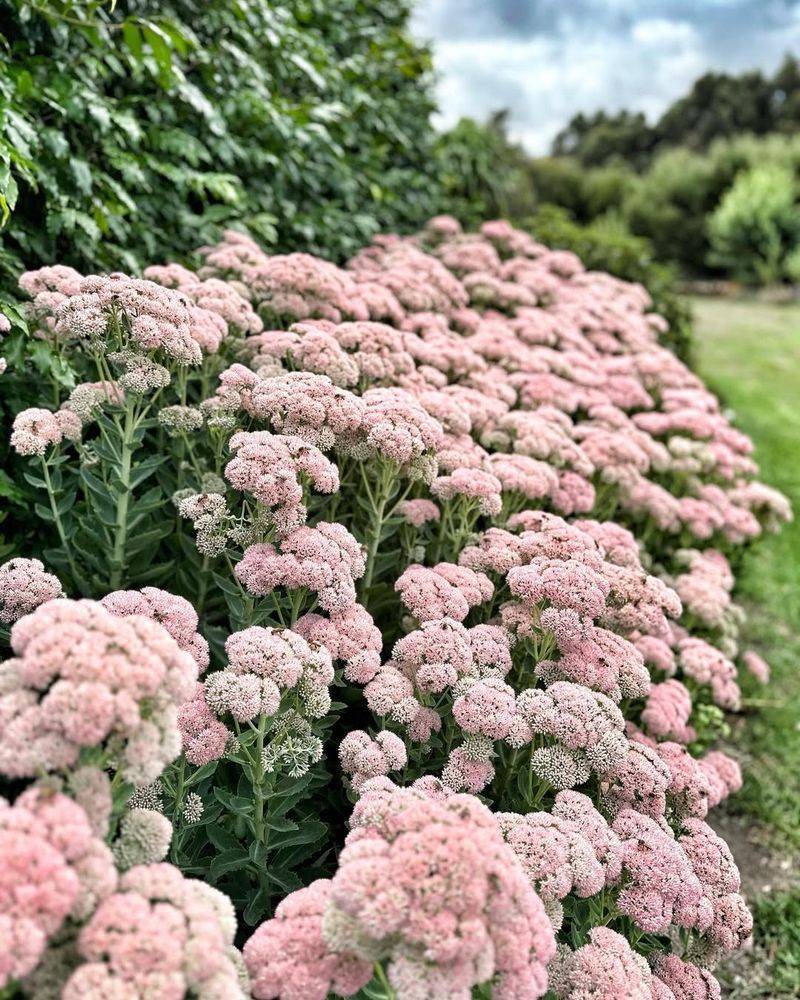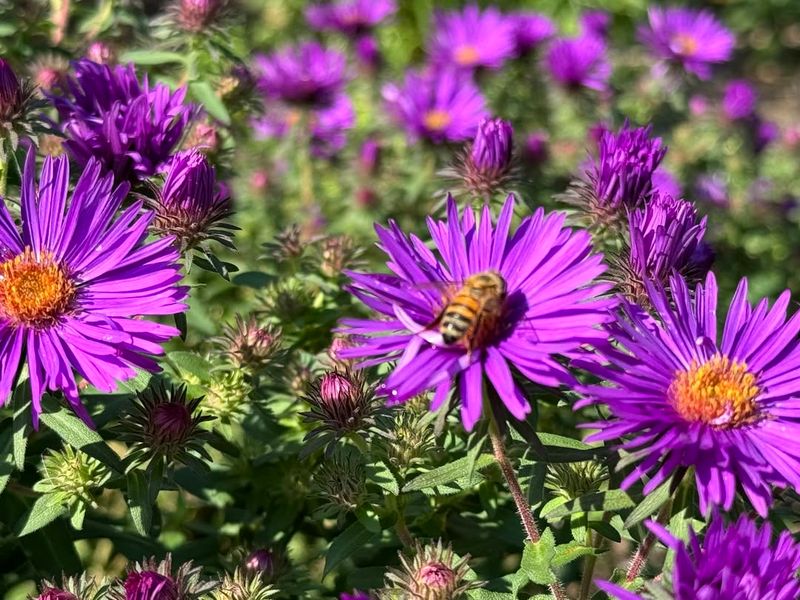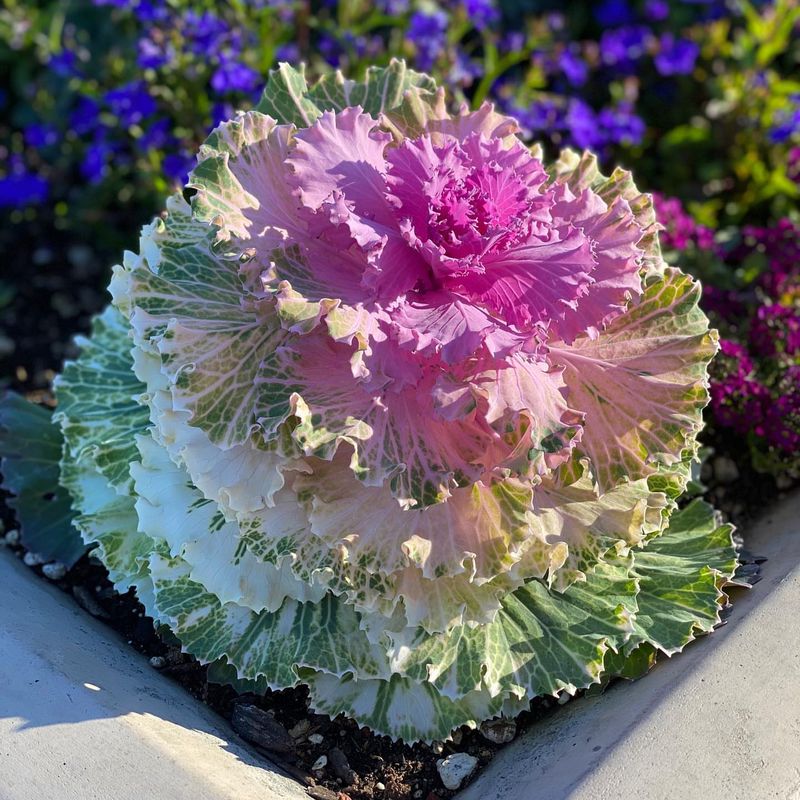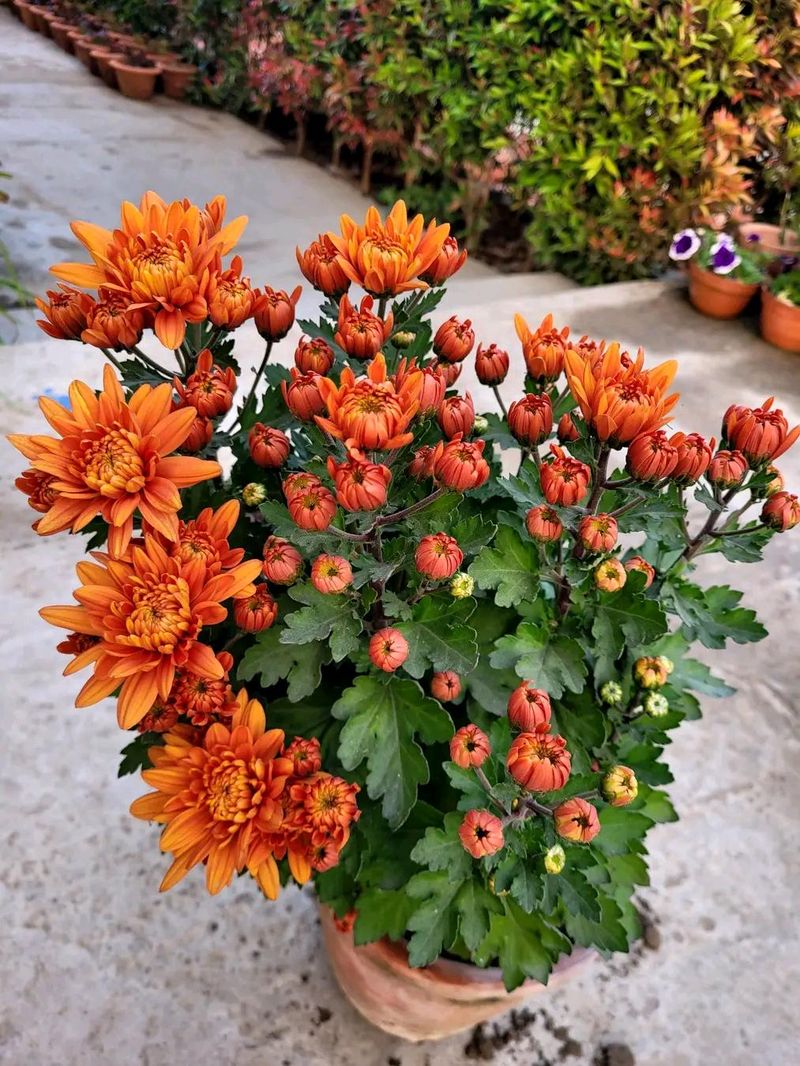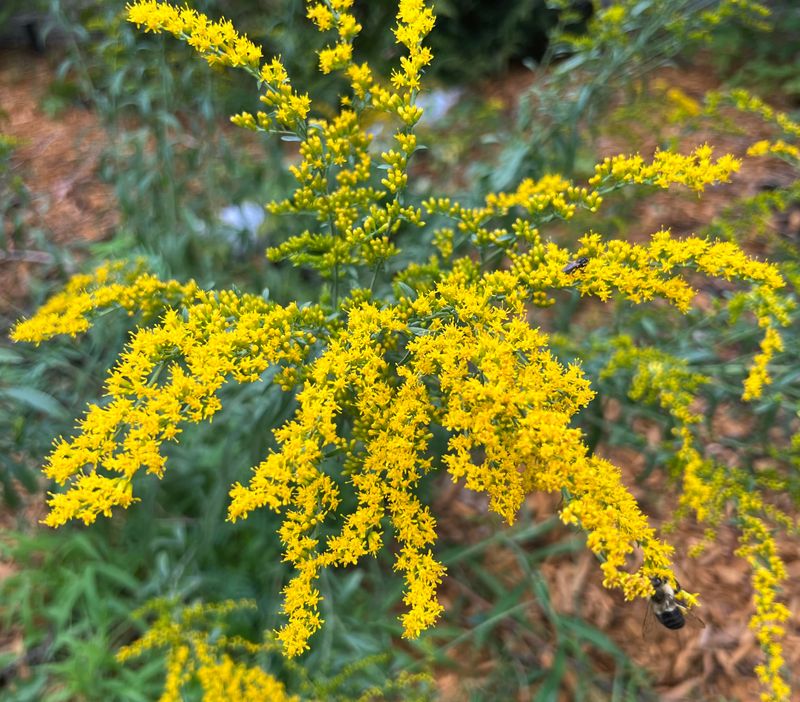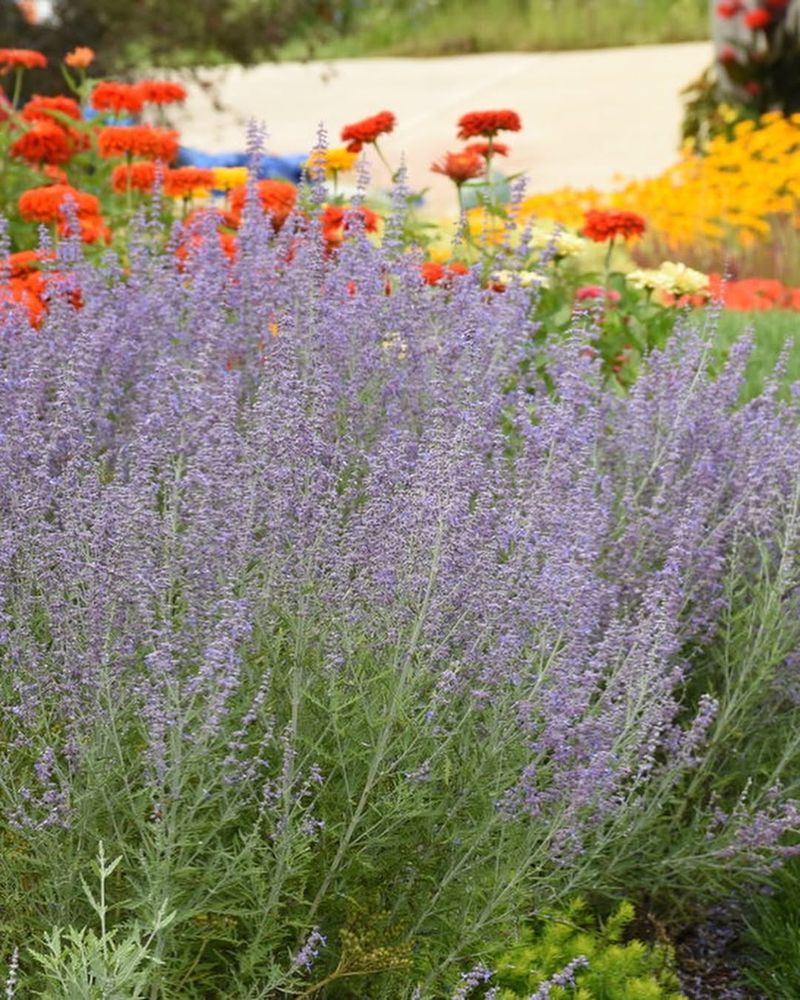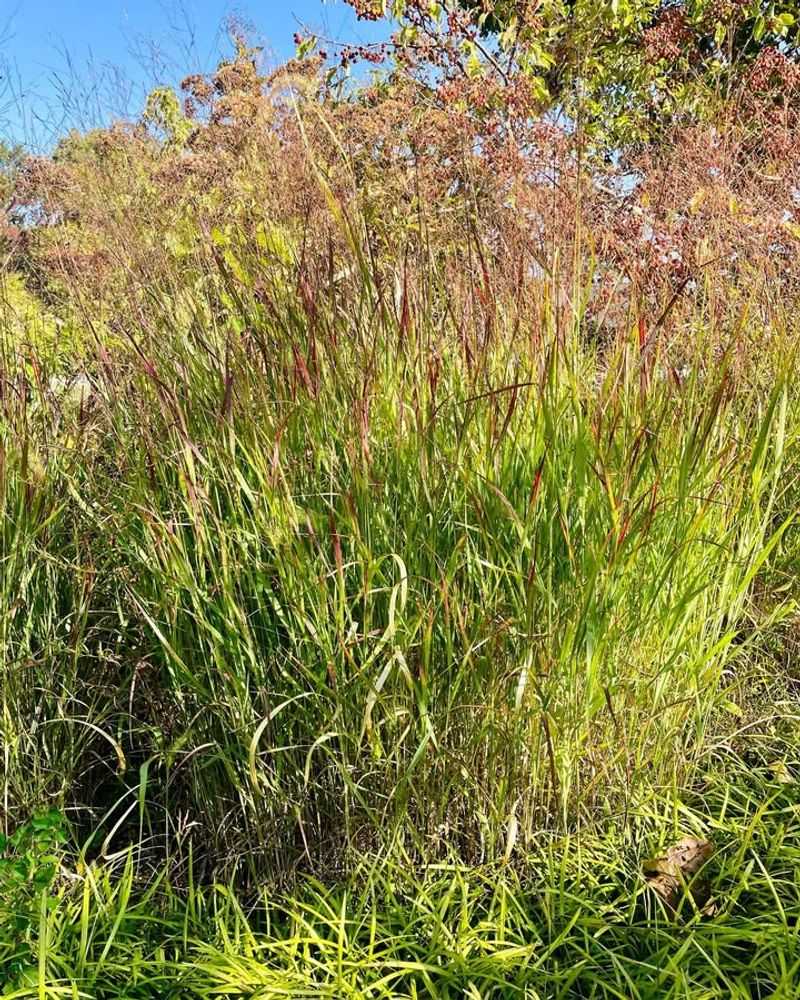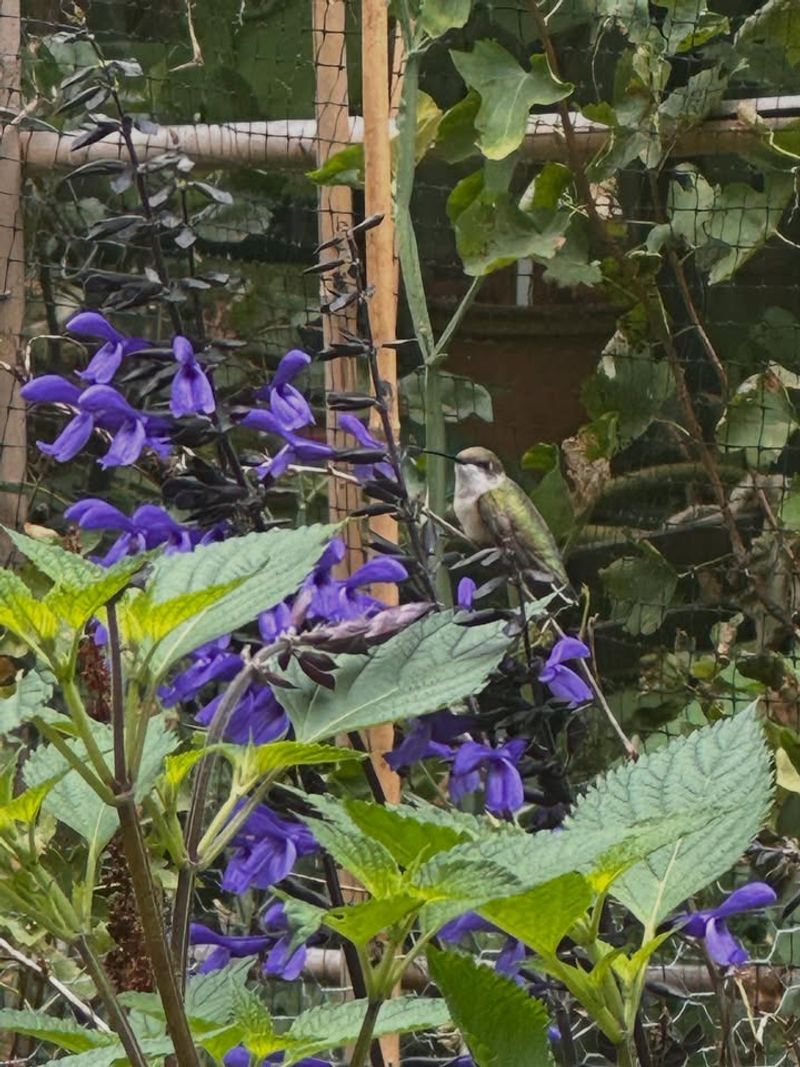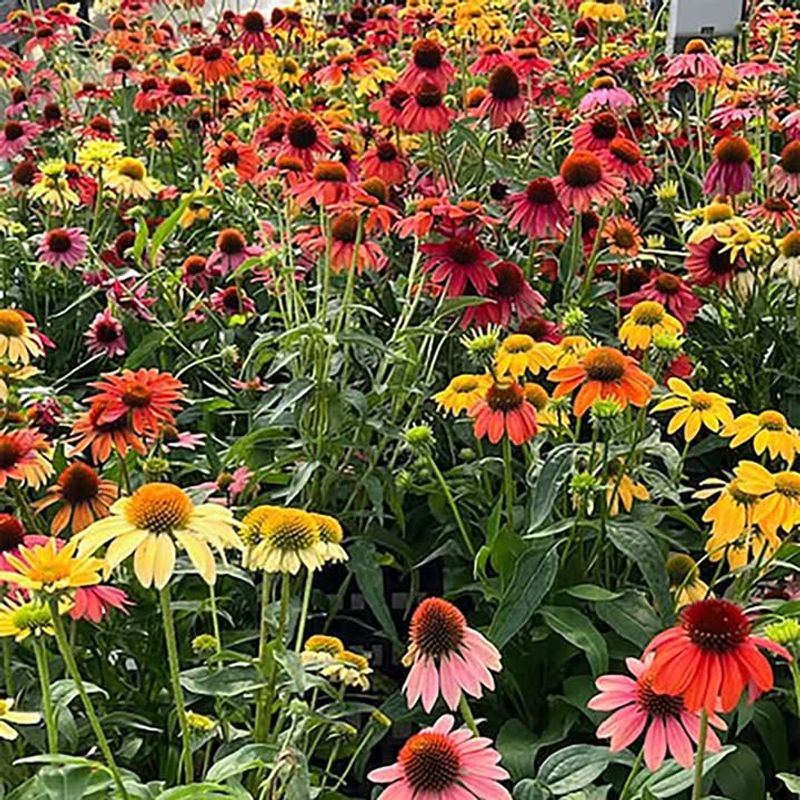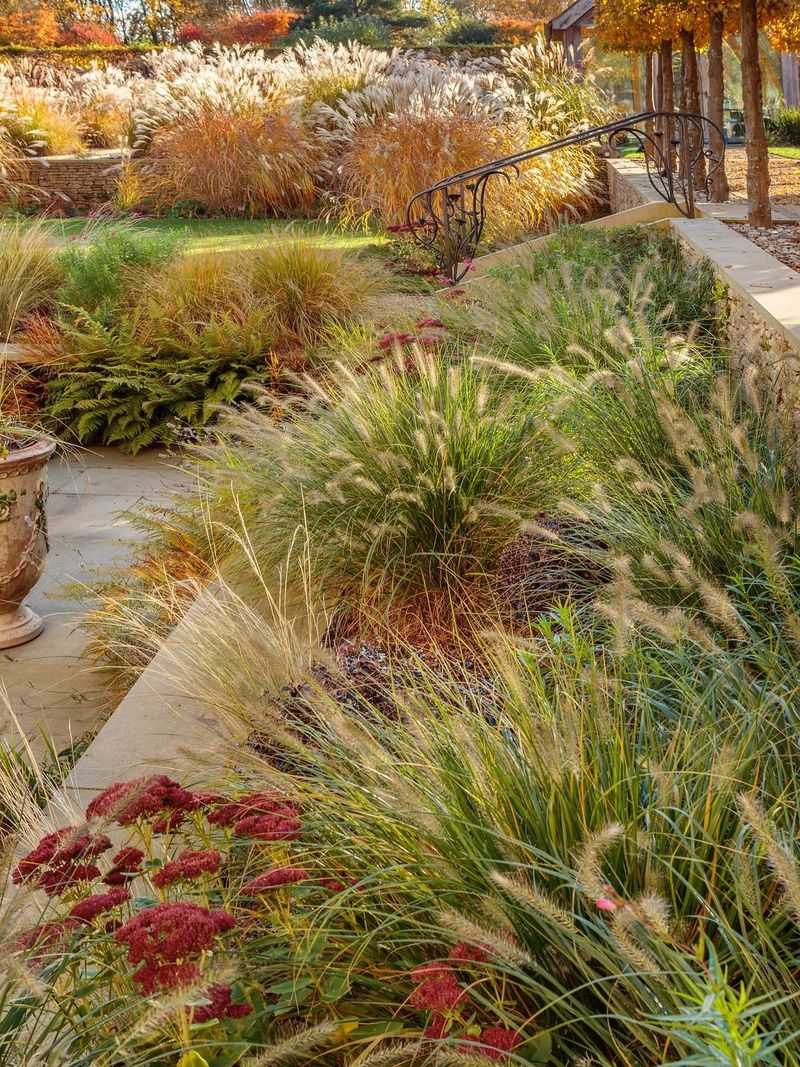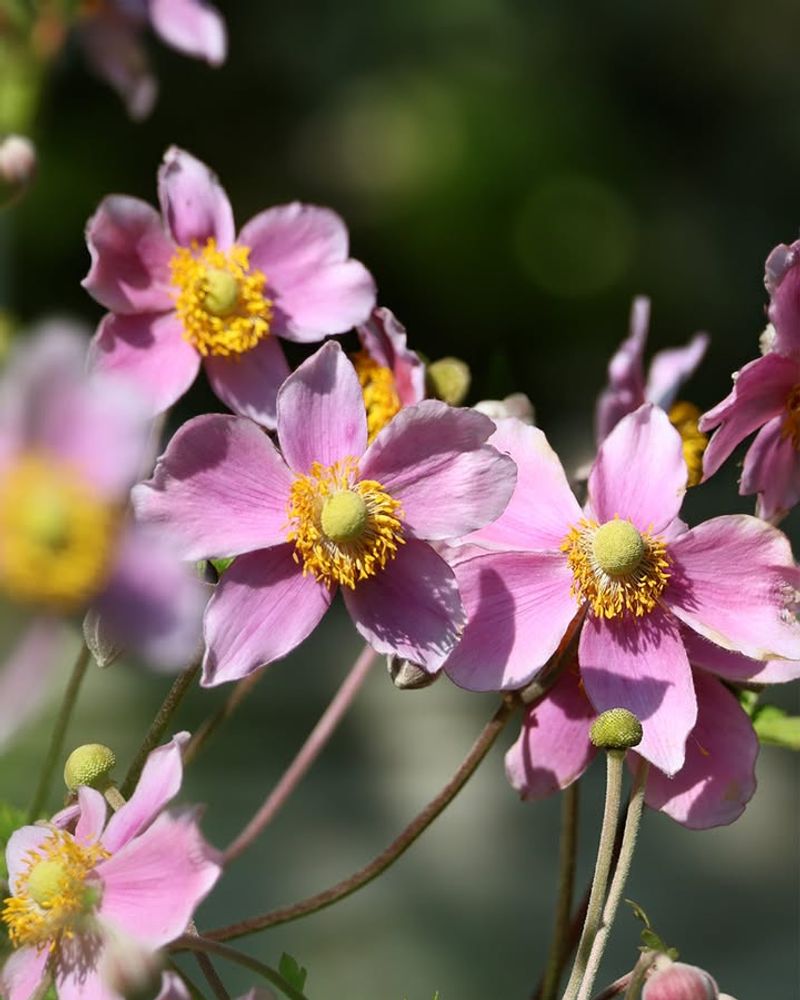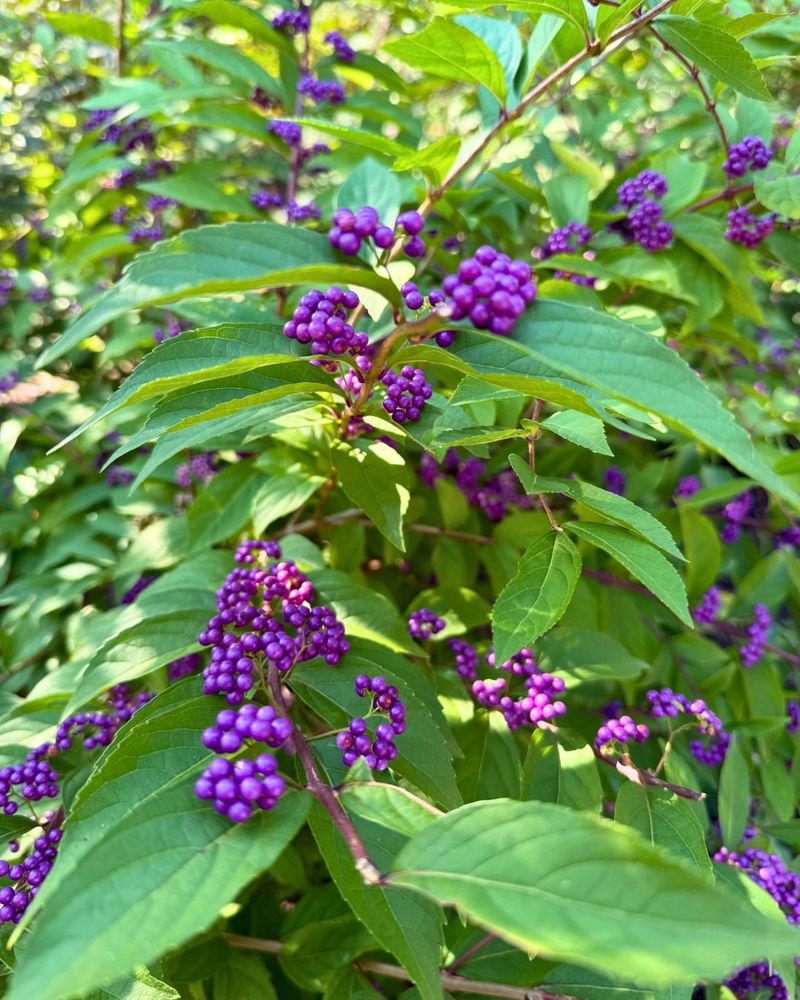North Carolina gardens in fall have a magic that’s hard to resist. From the rolling hills to city corners, fall colors make planting borders extra special.
Choosing the right plants can make your garden stand out and keep it looking vibrant well into colder months. Let’s look at twelve great options perfect for North Carolina landscapes.
1. Sedum ‘Autumn Joy’
Butterflies absolutely adore this tough-as-nails succulent that transforms from soft pink to deep bronze as temperatures drop. Growing about two feet tall, it adds structure and color without demanding much attention from busy gardeners.
North Carolina’s unpredictable fall weather doesn’t faze this hardy perennial one bit. It handles drought beautifully and looks fantastic even after frost hits your garden.
Plant it along borders where you need reliable late-season interest that won’t quit on you.
2. Aster ‘Purple Dome’
Imagine a plant that explodes with hundreds of vibrant purple blooms just when everything else starts fading away. That’s exactly what you get with this compact aster variety that stays neat without staking.
Pollinators flock to these cheerful flowers throughout September and October across North Carolina. The mounding habit makes it perfect for edging borders or filling gaps between taller plants.
Full sun and decent drainage keep this beauty thriving year after year.
3. Ornamental Kale
Who says vegetables can’t be gorgeous? Ornamental kale develops stunning pink, purple, and white centers as cool nights arrive, creating living bouquets right in your border.
Frost actually intensifies the colors rather than destroying them, making it ideal for North Carolina’s autumn climate. These rosettes grow 12 to 18 inches wide and look amazing planted in groups of three or five.
Gardeners love how it bridges the gap between summer annuals and winter dormancy beautifully.
4. Chrysanthemum
Nothing says autumn quite like mums bursting with color in every shade imaginable. Hardy garden varieties establish deep roots and return reliably each year when planted early in the season.
North Carolina gardeners should plant them in spring rather than fall for best survival rates. These workhorses bloom for weeks, providing constant color when you need it most.
Pinch them back until July to encourage bushy growth and maximum flower production later on.
5. Goldenrod ‘Fireworks’
Contrary to popular belief, this native beauty won’t trigger allergies—ragweed gets that blame unfairly pinned on goldenrod. The flower sprays arch outward like golden fireworks exploding in slow motion across your border.
Growing three to four feet tall, it provides dramatic height and movement that catches every breeze. North Carolina’s native pollinators depend on this plant for late-season nectar when other sources disappear.
It’s deer-resistant and thrives in ordinary soil with minimal fussing.
6. Russian Sage
Airy lavender-blue flowers float above silvery foliage, creating a soft, dreamy effect that contrasts beautifully with bolder fall colors. The aromatic leaves release a pleasant scent when brushed against, adding sensory interest to your border.
Heat and drought barely register with this Mediterranean native that’s perfectly adapted to North Carolina summers. By fall, it reaches four feet tall and wide, providing substantial presence without feeling heavy.
Full sun and good drainage are its only real requirements.
7. Switchgrass ‘Shenandoah’
Few grasses deliver color quite like this native variety that turns deep burgundy-red as autumn progresses. Airy seed heads catch sunlight and dance with the slightest movement, adding dynamic energy to static borders.
Reaching four to five feet tall, it provides vertical interest and screens without blocking views completely. North Carolina’s native wildlife appreciate the seeds and shelter it offers through winter months.
It tolerates various soil conditions and laughs at our summer humidity.
8. Salvia ‘Black and Blue’
Hummingbirds make regular pit stops at these striking blue-and-black flower spikes that keep producing until hard frost arrives. Growing three to four feet tall, this tender perennial acts as an annual in most North Carolina gardens but reseeds generously.
The dramatic color combination stands out from across the yard and pairs wonderfully with warm autumn tones. Plant it in spring for maximum impact by fall when it reaches peak size.
Regular deadheading isn’t necessary—just let it bloom continuously.
9. Coneflower ‘Cheyenne Spirit’
Did you know coneflowers bloom well into fall if deadheaded regularly? This award-winning variety produces flowers in a rainbow of warm colors—red, orange, yellow, and purple—all on the same plant.
Goldfinches love snacking on the seed heads if you leave some standing through autumn. North Carolina’s climate suits this prairie native perfectly, and it handles both heat and occasional drought gracefully.
Established plants spread slowly to fill border spaces naturally over time.
10. Pennisetum ‘Fireworks’
Variegated foliage striped with pink, burgundy, and green creates a living kaleidoscope that intensifies as nights cool down. Rosy-pink plumes emerge in late summer and persist through fall, adding soft texture to border edges.
Growing three feet tall and wide, it works beautifully as a specimen or massed for dramatic effect. While it’s a tender perennial in North Carolina, many gardeners treat it as a worthwhile annual investment.
Container growing works great too if you want to overwinter it indoors.
11. Japanese Anemone
Elegant flowers on wiry stems sway gracefully above dark foliage, bringing refined beauty to partially shaded borders where few other plants bloom in fall. Pink or white blossoms open in late summer and continue through October.
North Carolina gardeners appreciate how they fill difficult spots under trees where grass struggles to grow. Once established, they spread slowly to form impressive colonies that return faithfully each year.
Morning sun with afternoon shade provides ideal growing conditions for this charming perennial.
12. Beautyberry
Clusters of shocking purple berries encircle the stems like glowing bracelets, creating one of fall’s most unexpected color displays. This North Carolina native shrub grows four to six feet tall and wide, providing substantial presence in mixed borders.
Birds eventually feast on the berries, but they last weeks before becoming wildlife snacks. The arching branches add graceful movement, and the plant tolerates both sun and partial shade equally well.
Cut it back hard in late winter to encourage fresh, berry-laden growth.

